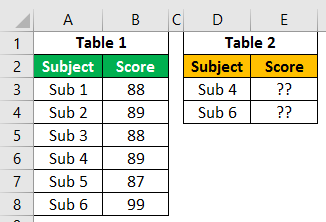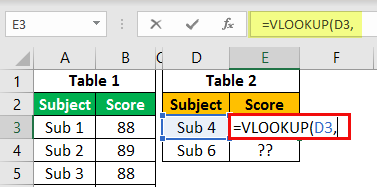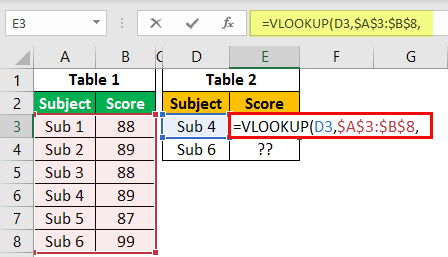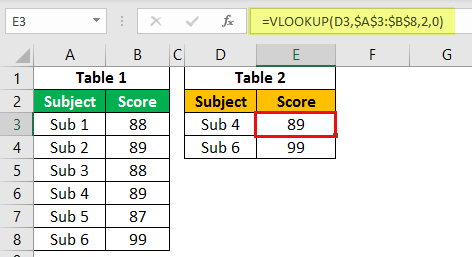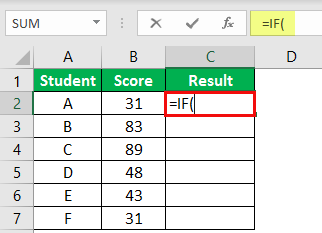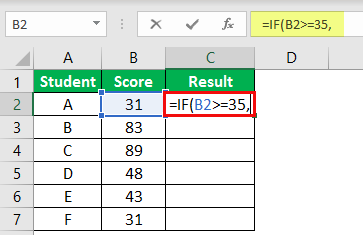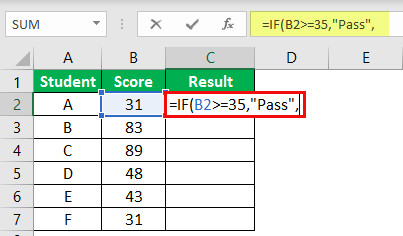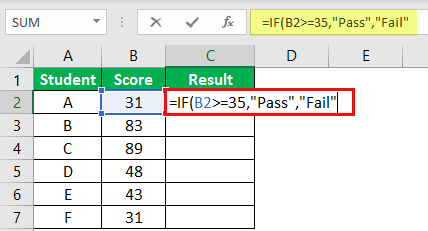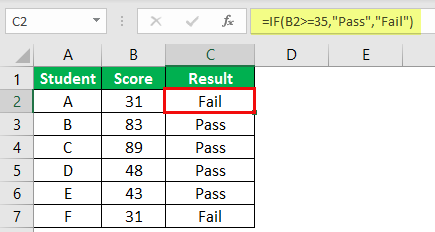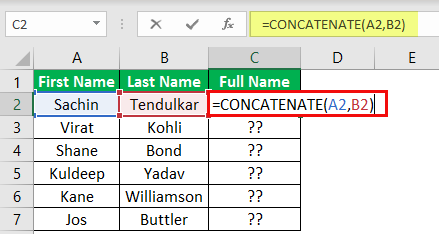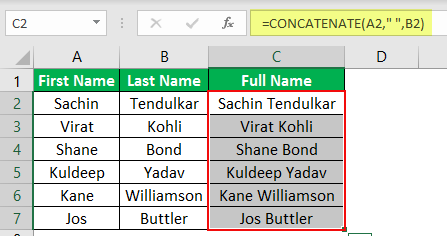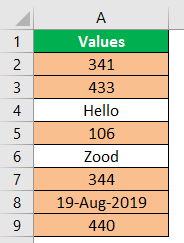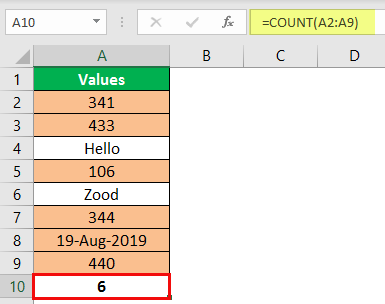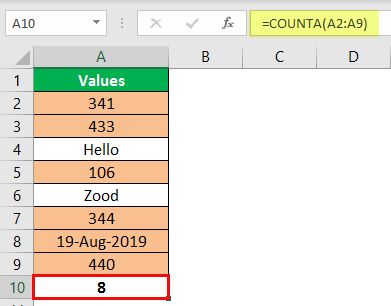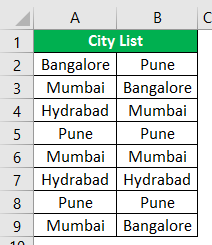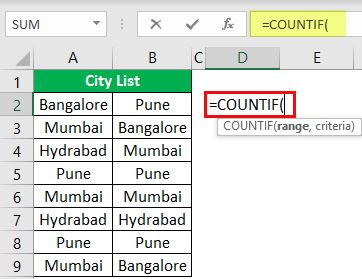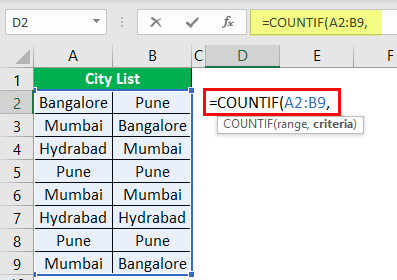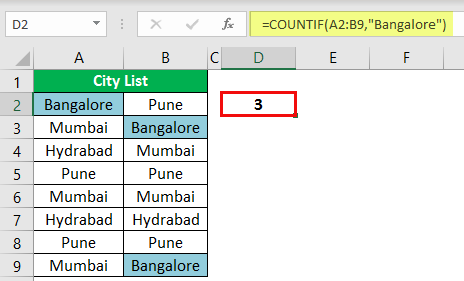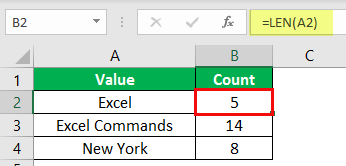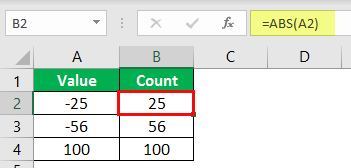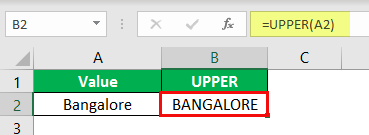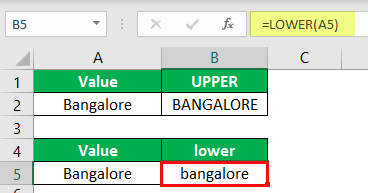Many users find that using an external keyboard with keyboard shortcuts for Excel helps them work more efficiently. For users with mobility or vision disabilities, keyboard shortcuts can be easier than using the touchscreen and are an essential alternative to using a mouse.
Notes:
-
The shortcuts in this topic refer to the US keyboard layout. Keys for other layouts might not correspond exactly to the keys on a US keyboard.
-
A plus sign (+) in a shortcut means that you need to press multiple keys at the same time.
-
A comma sign (,) in a shortcut means that you need to press multiple keys in order.
This article describes the keyboard shortcuts, function keys, and some other common shortcut keys in Excel for Windows.
Notes:
-
To quickly find a shortcut in this article, you can use the Search. Press Ctrl+F, and then type your search words.
-
If an action that you use often does not have a shortcut key, you can record a macro to create one. For instructions, go to Automate tasks with the Macro Recorder.
-
Download our 50 time-saving Excel shortcuts quick tips guide.
-
Get the Excel 2016 keyboard shortcuts in a Word document: Excel keyboard shortcuts and function keys.
In this topic
-
Frequently used shortcuts
-
Ribbon keyboard shortcuts
-
Use the Access keys for ribbon tabs
-
Work in the ribbon with the keyboard
-
-
Keyboard shortcuts for navigating in cells
-
Keyboard shortcuts for formatting cells
-
Keyboard shortcuts in the Paste Special dialog box in Excel 2013
-
-
Keyboard shortcuts for making selections and performing actions
-
Keyboard shortcuts for working with data, functions, and the formula bar
-
Keyboard shortcuts for refreshing external data
-
Power Pivot keyboard shortcuts
-
Function keys
-
Other useful shortcut keys
Frequently used shortcuts
This table lists the most frequently used shortcuts in Excel.
|
To do this |
Press |
|---|---|
|
Close a workbook. |
Ctrl+W |
|
Open a workbook. |
Ctrl+O |
|
Go to the Home tab. |
Alt+H |
|
Save a workbook. |
Ctrl+S |
|
Copy selection. |
Ctrl+C |
|
Paste selection. |
Ctrl+V |
|
Undo recent action. |
Ctrl+Z |
|
Remove cell contents. |
Delete |
|
Choose a fill color. |
Alt+H, H |
|
Cut selection. |
Ctrl+X |
|
Go to the Insert tab. |
Alt+N |
|
Apply bold formatting. |
Ctrl+B |
|
Center align cell contents. |
Alt+H, A, C |
|
Go to the Page Layout tab. |
Alt+P |
|
Go to the Data tab. |
Alt+A |
|
Go to the View tab. |
Alt+W |
|
Open the context menu. |
Shift+F10 or Windows Menu key |
|
Add borders. |
Alt+H, B |
|
Delete column. |
Alt+H, D, C |
|
Go to the Formula tab. |
Alt+M |
|
Hide the selected rows. |
Ctrl+9 |
|
Hide the selected columns. |
Ctrl+0 |
Top of Page
Ribbon keyboard shortcuts
The ribbon groups related options on tabs. For example, on the Home tab, the Number group includes the Number Format option. Press the Alt key to display the ribbon shortcuts, called Key Tips, as letters in small images next to the tabs and options as shown in the image below.

You can combine the Key Tips letters with the Alt key to make shortcuts called Access Keys for the ribbon options. For example, press Alt+H to open the Home tab, and Alt+Q to move to the Tell me or Search field. Press Alt again to see KeyTips for the options for the selected tab.
Depending on the version of Microsoft 365 you are using, the Search text field at the top of the app window might be called Tell Me instead. Both offer a largely similar experience, but some options and search results can vary.
In Office 2013 and Office 2010, most of the old Alt key menu shortcuts still work, too. However, you need to know the full shortcut. For example, press Alt, and then press one of the old menu keys, for example, E (Edit), V (View), I (Insert), and so on. A notification pops up saying you’re using an access key from an earlier version of Microsoft 365. If you know the entire key sequence, go ahead, and use it. If you don’t know the sequence, press Esc and use Key Tips instead.
Use the Access keys for ribbon tabs
To go directly to a tab on the ribbon, press one of the following access keys. Additional tabs might appear depending on your selection in the worksheet.
|
To do this |
Press |
|---|---|
|
Move to the Tell me or Search field on the ribbon and type a search term for assistance or Help content. |
Alt+Q, then enter the search term. |
|
Open the File menu. |
Alt+F |
|
Open the Home tab and format text and numbers and use the Find tool. |
Alt+H |
|
Open the Insert tab and insert PivotTables, charts, add-ins, Sparklines, pictures, shapes, headers, or text boxes. |
Alt+N |
|
Open the Page Layout tab and work with themes, page setup, scale, and alignment. |
Alt+P |
|
Open the Formulas tab and insert, trace, and customize functions and calculations. |
Alt+M |
|
Open the Data tab and connect to, sort, filter, analyze, and work with data. |
Alt+A |
|
Open the Review tab and check spelling, add notes and threaded comments, and protect sheets and workbooks. |
Alt+R |
|
Open the View tab and preview page breaks and layouts, show and hide gridlines and headings, set zoom magnification, manage windows and panes, and view macros. |
Alt+W |
Top of Page
Work in the ribbon with the keyboard
|
To do this |
Press |
|---|---|
|
Select the active tab on the ribbon and activate the access keys. |
Alt or F10. To move to a different tab, use access keys or the arrow keys. |
|
Move the focus to commands on the ribbon. |
Tab key or Shift+Tab |
|
Move down, up, left, or right, respectively, among the items on the ribbon. |
Arrow keys |
|
Show the tooltip for the ribbon element currently in focus. |
Ctrl+Shift+F10 |
|
Activate a selected button. |
Spacebar or Enter |
|
Open the list for a selected command. |
Down arrow key |
|
Open the menu for a selected button. |
Alt+Down arrow key |
|
When a menu or submenu is open, move to the next command. |
Down arrow key |
|
Expand or collapse the ribbon. |
Ctrl+F1 |
|
Open a context menu. |
Shift+F10 Or, on a Windows keyboard, the Windows Menu key (usually between the Alt Gr and right Ctrl keys) |
|
Move to the submenu when a main menu is open or selected. |
Left arrow key |
|
Move from one group of controls to another. |
Ctrl+Left or Right arrow key |
Top of Page
Keyboard shortcuts for navigating in cells
|
To do this |
Press |
|---|---|
|
Move to the previous cell in a worksheet or the previous option in a dialog box. |
Shift+Tab |
|
Move one cell up in a worksheet. |
Up arrow key |
|
Move one cell down in a worksheet. |
Down arrow key |
|
Move one cell left in a worksheet. |
Left arrow key |
|
Move one cell right in a worksheet. |
Right arrow key |
|
Move to the edge of the current data region in a worksheet. |
Ctrl+Arrow key |
|
Enter the End mode, move to the next nonblank cell in the same column or row as the active cell, and turn off End mode. If the cells are blank, move to the last cell in the row or column. |
End, Arrow key |
|
Move to the last cell on a worksheet, to the lowest used row of the rightmost used column. |
Ctrl+End |
|
Extend the selection of cells to the last used cell on the worksheet (lower-right corner). |
Ctrl+Shift+End |
|
Move to the cell in the upper-left corner of the window when Scroll lock is turned on. |
Home+Scroll lock |
|
Move to the beginning of a worksheet. |
Ctrl+Home |
|
Move one screen down in a worksheet. |
Page down |
|
Move to the next sheet in a workbook. |
Ctrl+Page down |
|
Move one screen to the right in a worksheet. |
Alt+Page down |
|
Move one screen up in a worksheet. |
Page up |
|
Move one screen to the left in a worksheet. |
Alt+Page up |
|
Move to the previous sheet in a workbook. |
Ctrl+Page up |
|
Move one cell to the right in a worksheet. Or, in a protected worksheet, move between unlocked cells. |
Tab key |
|
Open the list of validation choices on a cell that has data validation option applied to it. |
Alt+Down arrow key |
|
Cycle through floating shapes, such as text boxes or images. |
Ctrl+Alt+5, then the Tab key repeatedly |
|
Exit the floating shape navigation and return to the normal navigation. |
Esc |
|
Scroll horizontally. |
Ctrl+Shift, then scroll your mouse wheel up to go left, down to go right |
|
Zoom in. |
Ctrl+Alt+Equal sign ( = ) |
|
Zoom out. |
Ctrl+Alt+Minus sign (-) |
Top of Page
Keyboard shortcuts for formatting cells
|
To do this |
Press |
|---|---|
|
Open the Format Cells dialog box. |
Ctrl+1 |
|
Format fonts in the Format Cells dialog box. |
Ctrl+Shift+F or Ctrl+Shift+P |
|
Edit the active cell and put the insertion point at the end of its contents. Or, if editing is turned off for the cell, move the insertion point into the formula bar. If editing a formula, toggle Point mode off or on so you can use the arrow keys to create a reference. |
F2 |
|
Insert a note. Open and edit a cell note. |
Shift+F2 Shift+F2 |
|
Insert a threaded comment. Open and reply to a threaded comment. |
Ctrl+Shift+F2 Ctrl+Shift+F2 |
|
Open the Insert dialog box to insert blank cells. |
Ctrl+Shift+Plus sign (+) |
|
Open the Delete dialog box to delete selected cells. |
Ctrl+Minus sign (-) |
|
Enter the current time. |
Ctrl+Shift+Colon (:) |
|
Enter the current date. |
Ctrl+Semicolon (;) |
|
Switch between displaying cell values or formulas in the worksheet. |
Ctrl+Grave accent (`) |
|
Copy a formula from the cell above the active cell into the cell or the formula bar. |
Ctrl+Apostrophe (‘) |
|
Move the selected cells. |
Ctrl+X |
|
Copy the selected cells. |
Ctrl+C |
|
Paste content at the insertion point, replacing any selection. |
Ctrl+V |
|
Open the Paste Special dialog box. |
Ctrl+Alt+V |
|
Italicize text or remove italic formatting. |
Ctrl+I or Ctrl+3 |
|
Bold text or remove bold formatting. |
Ctrl+B or Ctrl+2 |
|
Underline text or remove underline. |
Ctrl+U or Ctrl+4 |
|
Apply or remove strikethrough formatting. |
Ctrl+5 |
|
Switch between hiding objects, displaying objects, and displaying placeholders for objects. |
Ctrl+6 |
|
Apply an outline border to the selected cells. |
Ctrl+Shift+Ampersand sign (&) |
|
Remove the outline border from the selected cells. |
Ctrl+Shift+Underscore (_) |
|
Display or hide the outline symbols. |
Ctrl+8 |
|
Use the Fill Down command to copy the contents and format of the topmost cell of a selected range into the cells below. |
Ctrl+D |
|
Apply the General number format. |
Ctrl+Shift+Tilde sign (~) |
|
Apply the Currency format with two decimal places (negative numbers in parentheses). |
Ctrl+Shift+Dollar sign ($) |
|
Apply the Percentage format with no decimal places. |
Ctrl+Shift+Percent sign (%) |
|
Apply the Scientific number format with two decimal places. |
Ctrl+Shift+Caret sign (^) |
|
Apply the Date format with the day, month, and year. |
Ctrl+Shift+Number sign (#) |
|
Apply the Time format with the hour and minute, and AM or PM. |
Ctrl+Shift+At sign (@) |
|
Apply the Number format with two decimal places, thousands separator, and minus sign (-) for negative values. |
Ctrl+Shift+Exclamation point (!) |
|
Open the Insert hyperlink dialog box. |
Ctrl+K |
|
Check spelling in the active worksheet or selected range. |
F7 |
|
Display the Quick Analysis options for selected cells that contain data. |
Ctrl+Q |
|
Display the Create Table dialog box. |
Ctrl+L or Ctrl+T |
|
Open the Workbook Statistics dialog box. |
Ctrl+Shift+G |
Top of Page
Keyboard shortcuts in the Paste Special dialog box in Excel 2013
In Excel 2013, you can paste a specific aspect of the copied data like its formatting or value using the Paste Special options. After you’ve copied the data, press Ctrl+Alt+V, or Alt+E+S to open the Paste Special dialog box.
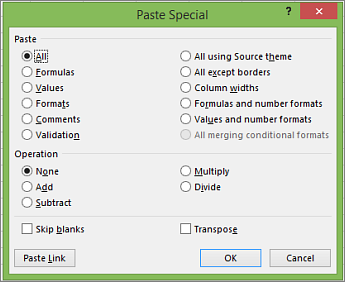
Tip: You can also select Home > Paste > Paste Special.
To pick an option in the dialog box, press the underlined letter for that option. For example, press the letter C to pick the Comments option.
|
To do this |
Press |
|---|---|
|
Paste all cell contents and formatting. |
A |
|
Paste only the formulas as entered in the formula bar. |
F |
|
Paste only the values (not the formulas). |
V |
|
Paste only the copied formatting. |
T |
|
Paste only comments and notes attached to the cell. |
C |
|
Paste only the data validation settings from copied cells. |
N |
|
Paste all cell contents and formatting from copied cells. |
H |
|
Paste all cell contents without borders. |
X |
|
Paste only column widths from copied cells. |
W |
|
Paste only formulas and number formats from copied cells. |
R |
|
Paste only the values (not formulas) and number formats from copied cells. |
U |
Top of Page
Keyboard shortcuts for making selections and performing actions
|
To do this |
Press |
|---|---|
|
Select the entire worksheet. |
Ctrl+A or Ctrl+Shift+Spacebar |
|
Select the current and next sheet in a workbook. |
Ctrl+Shift+Page down |
|
Select the current and previous sheet in a workbook. |
Ctrl+Shift+Page up |
|
Extend the selection of cells by one cell. |
Shift+Arrow key |
|
Extend the selection of cells to the last nonblank cell in the same column or row as the active cell, or if the next cell is blank, to the next nonblank cell. |
Ctrl+Shift+Arrow key |
|
Turn extend mode on and use the arrow keys to extend a selection. Press again to turn off. |
F8 |
|
Add a non-adjacent cell or range to a selection of cells by using the arrow keys. |
Shift+F8 |
|
Start a new line in the same cell. |
Alt+Enter |
|
Fill the selected cell range with the current entry. |
Ctrl+Enter |
|
Complete a cell entry and select the cell above. |
Shift+Enter |
|
Select an entire column in a worksheet. |
Ctrl+Spacebar |
|
Select an entire row in a worksheet. |
Shift+Spacebar |
|
Select all objects on a worksheet when an object is selected. |
Ctrl+Shift+Spacebar |
|
Extend the selection of cells to the beginning of the worksheet. |
Ctrl+Shift+Home |
|
Select the current region if the worksheet contains data. Press a second time to select the current region and its summary rows. Press a third time to select the entire worksheet. |
Ctrl+A or Ctrl+Shift+Spacebar |
|
Select the current region around the active cell. |
Ctrl+Shift+Asterisk sign (*) |
|
Select the first command on the menu when a menu or submenu is visible. |
Home |
|
Repeat the last command or action, if possible. |
Ctrl+Y |
|
Undo the last action. |
Ctrl+Z |
|
Expand grouped rows or columns. |
While hovering over the collapsed items, press and hold the Shift key and scroll down. |
|
Collapse grouped rows or columns. |
While hovering over the expanded items, press and hold the Shift key and scroll up. |
Top of Page
Keyboard shortcuts for working with data, functions, and the formula bar
|
To do this |
Press |
|---|---|
|
Turn on or off tooltips for checking formulas directly in the formula bar or in the cell you’re editing. |
Ctrl+Alt+P |
|
Edit the active cell and put the insertion point at the end of its contents. Or, if editing is turned off for the cell, move the insertion point into the formula bar. If editing a formula, toggle Point mode off or on so you can use the arrow keys to create a reference. |
F2 |
|
Expand or collapse the formula bar. |
Ctrl+Shift+U |
|
Cancel an entry in the cell or formula bar. |
Esc |
|
Complete an entry in the formula bar and select the cell below. |
Enter |
|
Move the cursor to the end of the text when in the formula bar. |
Ctrl+End |
|
Select all text in the formula bar from the cursor position to the end. |
Ctrl+Shift+End |
|
Calculate all worksheets in all open workbooks. |
F9 |
|
Calculate the active worksheet. |
Shift+F9 |
|
Calculate all worksheets in all open workbooks, regardless of whether they have changed since the last calculation. |
Ctrl+Alt+F9 |
|
Check dependent formulas, and then calculate all cells in all open workbooks, including cells not marked as needing to be calculated. |
Ctrl+Alt+Shift+F9 |
|
Display the menu or message for an Error Checking button. |
Alt+Shift+F10 |
|
Display the Function Arguments dialog box when the insertion point is to the right of a function name in a formula. |
Ctrl+A |
|
Insert argument names and parentheses when the insertion point is to the right of a function name in a formula. |
Ctrl+Shift+A |
|
Insert the AutoSum formula |
Alt+Equal sign ( = ) |
|
Invoke Flash Fill to automatically recognize patterns in adjacent columns and fill the current column |
Ctrl+E |
|
Cycle through all combinations of absolute and relative references in a formula if a cell reference or range is selected. |
F4 |
|
Insert a function. |
Shift+F3 |
|
Copy the value from the cell above the active cell into the cell or the formula bar. |
Ctrl+Shift+Straight quotation mark («) |
|
Create an embedded chart of the data in the current range. |
Alt+F1 |
|
Create a chart of the data in the current range in a separate Chart sheet. |
F11 |
|
Define a name to use in references. |
Alt+M, M, D |
|
Paste a name from the Paste Name dialog box (if names have been defined in the workbook). |
F3 |
|
Move to the first field in the next record of a data form. |
Enter |
|
Create, run, edit, or delete a macro. |
Alt+F8 |
|
Open the Microsoft Visual Basic For Applications Editor. |
Alt+F11 |
|
Open the Power Query Editor |
Alt+F12 |
Top of Page
Keyboard shortcuts for refreshing external data
Use the following keys to refresh data from external data sources.
|
To do this |
Press |
|---|---|
|
Stop a refresh operation. |
Esc |
|
Refresh data in the current worksheet. |
Ctrl+F5 |
|
Refresh all data in the workbook. |
Ctrl+Alt+F5 |
Top of Page
Power Pivot keyboard shortcuts
Use the following keyboard shortcuts with Power Pivot in Microsoft 365, Excel 2019, Excel 2016, and Excel 2013.
|
To do this |
Press |
|---|---|
|
Open the context menu for the selected cell, column, or row. |
Shift+F10 |
|
Select the entire table. |
Ctrl+A |
|
Copy selected data. |
Ctrl+C |
|
Delete the table. |
Ctrl+D |
|
Move the table. |
Ctrl+M |
|
Rename the table. |
Ctrl+R |
|
Save the file. |
Ctrl+S |
|
Redo the last action. |
Ctrl+Y |
|
Undo the last action. |
Ctrl+Z |
|
Select the current column. |
Ctrl+Spacebar |
|
Select the current row. |
Shift+Spacebar |
|
Select all cells from the current location to the last cell of the column. |
Shift+Page down |
|
Select all cells from the current location to the first cell of the column. |
Shift+Page up |
|
Select all cells from the current location to the last cell of the row. |
Shift+End |
|
Select all cells from the current location to the first cell of the row. |
Shift+Home |
|
Move to the previous table. |
Ctrl+Page up |
|
Move to the next table. |
Ctrl+Page down |
|
Move to the first cell in the upper-left corner of selected table. |
Ctrl+Home |
|
Move to the last cell in the lower-right corner of selected table. |
Ctrl+End |
|
Move to the first cell of the selected row. |
Ctrl+Left arrow key |
|
Move to the last cell of the selected row. |
Ctrl+Right arrow key |
|
Move to the first cell of the selected column. |
Ctrl+Up arrow key |
|
Move to the last cell of selected column. |
Ctrl+Down arrow key |
|
Close a dialog box or cancel a process, such as a paste operation. |
Ctrl+Esc |
|
Open the AutoFilter Menu dialog box. |
Alt+Down arrow key |
|
Open the Go To dialog box. |
F5 |
|
Recalculate all formulas in the Power Pivot window. For more information, see Recalculate Formulas in Power Pivot. |
F9 |
Top of Page
Function keys
|
Key |
Description |
|---|---|
|
F1 |
|
|
F2 |
|
|
F3 |
|
|
F4 |
|
|
F5 |
|
|
F6 |
|
|
F7 |
|
|
F8 |
|
|
F9 |
|
|
F10 |
|
|
F11 |
|
|
F12 |
|
Top of Page
Other useful shortcut keys
|
Key |
Description |
|---|---|
|
Alt |
For example,
|
|
Arrow keys |
|
|
Backspace |
|
|
Delete |
|
|
End |
|
|
Enter |
|
|
Esc |
|
|
Home |
|
|
Page down |
|
|
Page up |
|
|
Shift |
|
|
Spacebar |
|
|
Tab key |
|
Top of Page
See also
Excel help & learning
Basic tasks using a screen reader with Excel
Use a screen reader to explore and navigate Excel
Screen reader support for Excel
This article describes the keyboard shortcuts, function keys, and some other common shortcut keys in Excel for Mac.
Notes:
-
The settings in some versions of the Mac operating system (OS) and some utility applications might conflict with keyboard shortcuts and function key operations in Microsoft 365 for Mac.
-
If you don’t find a keyboard shortcut here that meets your needs, you can create a custom keyboard shortcut. For instructions, go to Create a custom keyboard shortcut for Office for Mac.
-
Many of the shortcuts that use the Ctrl key on a Windows keyboard also work with the Control key in Excel for Mac. However, not all do.
-
To quickly find a shortcut in this article, you can use the Search. Press
+F, and then type your search words.
-
Click-to-add is available but requires a setup. Select Excel> Preferences > Edit > Enable Click to Add Mode. To start a formula, type an equal sign ( = ), and then select cells to add them together. The plus sign (+) will be added automatically.
In this topic
-
Frequently used shortcuts
-
Shortcut conflicts
-
Change system preferences for keyboard shortcuts with the mouse
-
-
Work in windows and dialog boxes
-
Move and scroll in a sheet or workbook
-
Enter data on a sheet
-
Work in cells or the Formula bar
-
Format and edit data
-
Select cells, columns, or rows
-
Work with a selection
-
Use charts
-
Sort, filter, and use PivotTable reports
-
Outline data
-
Use function key shortcuts
-
Change function key preferences with the mouse
-
-
Drawing
Frequently used shortcuts
This table itemizes the most frequently used shortcuts in Excel for Mac.
|
To do this |
Press |
|---|---|
|
Paste selection. |
|
|
Copy selection. |
|
|
Clear selection. |
Delete |
|
Save workbook. |
|
|
Undo action. |
|
|
Redo action. |
|
|
Cut selection. |
|
|
Apply bold formatting. |
|
|
Print workbook. |
|
|
Open Visual Basic. |
Option+F11 |
|
Fill cells down. |
|
|
Fill cells right. |
|
|
Insert cells. |
Control+Shift+Equal sign ( = ) |
|
Delete cells. |
|
|
Calculate all open workbooks. |
|
|
Close window. |
|
|
Quit Excel. |
|
|
Display the Go To dialog box. |
Control+G |
|
Display the Format Cells dialog box. |
|
|
Display the Replace dialog box. |
Control+H |
|
Use Paste Special. |
|
|
Apply underline formatting. |
|
|
Apply italic formatting. |
|
|
Open a new blank workbook. |
|
|
Create a new workbook from template. |
|
|
Display the Save As dialog box. |
|
|
Display the Help window. |
F1 |
|
Select all. |
|
|
Add or remove a filter. |
|
|
Minimize or maximize the ribbon tabs. |
|
|
Display the Open dialog box. |
|
|
Check spelling. |
F7 |
|
Open the thesaurus. |
Shift+F7 |
|
Display the Formula Builder. |
Shift+F3 |
|
Open the Define Name dialog box. |
|
|
Insert or reply to a threaded comment. |
|
|
Open the Create names dialog box. |
|
|
Insert a new sheet. * |
Shift+F11 |
|
Print preview. |
|
Top of Page
Shortcut conflicts
Some Windows keyboard shortcuts conflict with the corresponding default macOS keyboard shortcuts. This topic flags such shortcuts with an asterisk (*). To use these shortcuts, you might have to change your Mac keyboard settings to change the Show Desktop shortcut for the key.
Change system preferences for keyboard shortcuts with the mouse
-
On the Apple menu, select System Settings.
-
Select Keyboard.
-
Select Keyboard Shortcuts.
-
Find the shortcut that you want to use in Excel and clear the checkbox for it.
Top of Page
Work in windows and dialog boxes
|
To do this |
Press |
|---|---|
|
Expand or minimize the ribbon. |
|
|
Switch to full screen view. |
|
|
Switch to the next application. |
|
|
Switch to the previous application. |
Shift+ |
|
Close the active workbook window. |
|
|
Take a screenshot and save it on your desktop. |
Shift+ |
|
Minimize the active window. |
Control+F9 |
|
Maximize or restore the active window. |
Control+F10 |
|
Hide Excel. |
|
|
Move to the next box, option, control, or command. |
Tab key |
|
Move to the previous box, option, control, or command. |
Shift+Tab |
|
Exit a dialog box or cancel an action. |
Esc |
|
Perform the action assigned to the default button (the button with the bold outline). |
Return |
|
Cancel the command and close the dialog box or menu. |
Esc |
Top of Page
Move and scroll in a sheet or workbook
|
To do this |
Press |
|---|---|
|
Move one cell up, down, left, or right. |
Arrow keys |
|
Move to the edge of the current data region. |
|
|
Move to the beginning of the row. |
Home |
|
Move to the beginning of the sheet. |
Control+Home |
|
Move to the last cell in use on the sheet. |
Control+End |
|
Move down one screen. |
Page down |
|
Move up one screen. |
Page up |
|
Move one screen to the right. |
Option+Page down |
|
Move one screen to the left. |
Option+Page up |
|
Move to the next sheet in the workbook. |
Control+Page down |
|
Move to the previous sheet in the workbook. |
Control+Page down |
|
Scroll to display the active cell. |
Control+Delete |
|
Display the Go To dialog box. |
Control+G |
|
Display the Find dialog box. |
Control+F |
|
Access search (when in a cell or when a cell is selected). |
|
|
Move between unlocked cells on a protected sheet. |
Tab key |
|
Scroll horizontally. |
Shift, then scroll the mouse wheel up for left, down for right |
Tip: To use the arrow keys to move between cells in Excel for Mac 2011, you must turn Scroll Lock off. To toggle Scroll Lock off or on, press Shift+F14. Depending on the type of your keyboard, you might need to use the Control, Option, or the Command key instead of the Shift key. If you are using a MacBook, you might need to plug in a USB keyboard to use the F14 key combination.
Top of Page
Enter data on a sheet
|
To do this |
Press |
|---|---|
|
Edit the selected cell. |
F2 |
|
Complete a cell entry and move forward in the selection. |
Return |
|
Start a new line in the same cell. |
Option+Return or Control+Option+Return |
|
Fill the selected cell range with the text that you type. |
|
|
Complete a cell entry and move up in the selection. |
Shift+Return |
|
Complete a cell entry and move to the right in the selection. |
Tab key |
|
Complete a cell entry and move to the left in the selection. |
Shift+Tab |
|
Cancel a cell entry. |
Esc |
|
Delete the character to the left of the insertion point or delete the selection. |
Delete |
|
Delete the character to the right of the insertion point or delete the selection. Note: Some smaller keyboards do not have this key. |
|
|
Delete text to the end of the line. Note: Some smaller keyboards do not have this key. |
Control+ |
|
Move one character up, down, left, or right. |
Arrow keys |
|
Move to the beginning of the line. |
Home |
|
Insert a note. |
Shift+F2 |
|
Open and edit a cell note. |
Shift+F2 |
|
Insert a threaded comment. |
|
|
Open and reply to a threaded comment. |
|
|
Fill down. |
Control+D |
|
Fill to the right. |
Control+R |
|
Invoke Flash Fill to automatically recognize patterns in adjacent columns and fill the current column. |
Control+E |
|
Define a name. |
Control+L |
Top of Page
Work in cells or the Formula bar
|
To do this |
Press |
|---|---|
|
Turn on or off tooltips for checking formulas directly in the formula bar. |
Control+Option+P |
|
Edit the selected cell. |
F2 |
|
Expand or collapse the formula bar. |
Control+Shift+U |
|
Edit the active cell and then clear it or delete the preceding character in the active cell as you edit the cell contents. |
Delete |
|
Complete a cell entry. |
Return |
|
Enter a formula as an array formula. |
Shift+ |
|
Cancel an entry in the cell or formula bar. |
Esc |
|
Display the Formula Builder after you type a valid function name in a formula |
Control+A |
|
Insert a hyperlink. |
|
|
Edit the active cell and position the insertion point at the end of the line. |
Control+U |
|
Open the Formula Builder. |
Shift+F3 |
|
Calculate the active sheet. |
Shift+F9 |
|
Display the context menu. |
Shift+F10 |
|
Start a formula. |
Equal sign ( = ) |
|
Toggle the formula reference style between absolute, relative, and mixed. |
|
|
Insert the AutoSum formula. |
Shift+ |
|
Enter the date. |
Control+Semicolon (;) |
|
Enter the time. |
|
|
Copy the value from the cell above the active cell into the cell or the formula bar. |
Control+Shift+Inch mark/Straight double quote («) |
|
Alternate between displaying cell values and displaying cell formulas. |
Control+Grave accent (`) |
|
Copy a formula from the cell above the active cell into the cell or the formula bar. |
Control+Apostrophe (‘) |
|
Display the AutoComplete list. |
Option+Down arrow key |
|
Define a name. |
Control+L |
|
Open the Smart Lookup pane. |
Control+Option+ |
Top of Page
Format and edit data
|
To do this |
Press |
|---|---|
|
Edit the selected cell. |
F2 |
|
Create a table. |
|
|
Insert a line break in a cell. |
|
|
Insert special characters like symbols, including emoji. |
Control+ |
|
Increase font size. |
Shift+ |
|
Decrease font size. |
Shift+ |
|
Align center. |
|
|
Align left. |
|
|
Display the Modify Cell Style dialog box. |
Shift+ |
|
Display the Format Cells dialog box. |
|
|
Apply the general number format. |
Control+Shift+Tilde (~) |
|
Apply the currency format with two decimal places (negative numbers appear in red with parentheses). |
Control+Shift+Dollar sign ($) |
|
Apply the percentage format with no decimal places. |
Control+Shift+Percent sign (%) |
|
Apply the exponential number format with two decimal places. |
Control+Shift+Caret (^) |
|
Apply the date format with the day, month, and year. |
Control+Shift+Number sign (#) |
|
Apply the time format with the hour and minute, and indicate AM or PM. |
Control+Shift+At symbol (@) |
|
Apply the number format with two decimal places, thousands separator, and minus sign (-) for negative values. |
Control+Shift+Exclamation point (!) |
|
Apply the outline border around the selected cells. |
|
|
Add an outline border to the right of the selection. |
|
|
Add an outline border to the left of the selection. |
|
|
Add an outline border to the top of the selection. |
|
|
Add an outline border to the bottom of the selection. |
|
|
Remove outline borders. |
|
|
Apply or remove bold formatting. |
|
|
Apply or remove italic formatting. |
|
|
Apply or remove underline formatting. |
|
|
Apply or remove strikethrough formatting. |
Shift+ |
|
Hide a column. |
|
|
Unhide a column. |
Shift+ |
|
Hide a row. |
|
|
Unhide a row. |
Shift+ |
|
Edit the active cell. |
Control+U |
|
Cancel an entry in the cell or the formula bar. |
Esc |
|
Edit the active cell and then clear it or delete the preceding character in the active cell as you edit the cell contents. |
Delete |
|
Paste text into the active cell. |
|
|
Complete a cell entry |
Return |
|
Give selected cells the current cell’s entry. |
|
|
Enter a formula as an array formula. |
Shift+ |
|
Display the Formula Builder after you type a valid function name in a formula. |
Control+A |
Top of Page
Select cells, columns, or rows
|
To do this |
Press |
|---|---|
|
Extend the selection by one cell. |
Shift+Arrow key |
|
Extend the selection to the last nonblank cell in the same column or row as the active cell. |
Shift+ |
|
Extend the selection to the beginning of the row. |
Shift+Home |
|
Extend the selection to the beginning of the sheet. |
Control+Shift+Home |
|
Extend the selection to the last cell used |
Control+Shift+End |
|
Select the entire column. * |
Control+Spacebar |
|
Select the entire row. |
Shift+Spacebar |
|
Select the current region or entire sheet. Press more than once to expand the selection. |
|
|
Select only visible cells. |
Shift+ |
|
Select only the active cell when multiple cells are selected. |
Shift+Delete |
|
Extend the selection down one screen. |
Shift+Page down |
|
Extend the selection up one screen |
Shift+Page up |
|
Alternate between hiding objects, displaying objects, |
Control+6 |
|
Turn on the capability to extend a selection |
F8 |
|
Add another range of cells to the selection. |
Shift+F8 |
|
Select the current array, which is the array that the |
Control+Forward slash (/) |
|
Select cells in a row that don’t match the value |
Control+Backward slash () |
|
Select only cells that are directly referred to by formulas in the selection. |
Control+Shift+Left bracket ([) |
|
Select all cells that are directly or indirectly referred to by formulas in the selection. |
Control+Shift+Left brace ({) |
|
Select only cells with formulas that refer directly to the active cell. |
Control+Right bracket (]) |
|
Select all cells with formulas that refer directly or indirectly to the active cell. |
Control+Shift+Right brace (}) |
Top of Page
Work with a selection
|
To do this |
Press |
|---|---|
|
Copy a selection. |
|
|
Paste a selection. |
|
|
Cut a selection. |
|
|
Clear a selection. |
Delete |
|
Delete the selection. |
Control+Hyphen |
|
Undo the last action. |
|
|
Hide a column. |
|
|
Unhide a column. |
|
|
Hide a row. |
|
|
Unhide a row. |
|
|
Move selected rows, columns, or cells. |
Hold the Shift key while you drag a selected row, column, or selected cells to move the selected cells and drop to insert them in a new location. If you don’t hold the Shift key while you drag and drop, the selected cells will be cut from the original location and pasted to the new location (not inserted). |
|
Move from top to bottom within the selection (down). * |
Return |
|
Move from bottom to top within the selection (up). * |
Shift+Return |
|
Move from left to right within the selection, |
Tab key |
|
Move from right to left within the selection, |
Shift+Tab |
|
Move clockwise to the next corner of the selection. |
Control+Period (.) |
|
Group selected cells. |
|
|
Ungroup selected cells. |
|
* These shortcuts might move in another direction other than down or up. If you’d like to change the direction of these shortcuts using the mouse, select Excel > Preferences > Edit, and then, in After pressing Return, move selection, select the direction you want to move to.
Top of Page
Use charts
|
To do this |
Press |
|---|---|
|
Insert a new chart sheet. * |
F11 |
|
Cycle through chart object selection. |
Arrow keys |
Top of Page
Sort, filter, and use PivotTable reports
|
To do this |
Press |
|---|---|
|
Open the Sort dialog box. |
|
|
Add or remove a filter. |
|
|
Display the Filter list or PivotTable page |
Option+Down arrow key |
Top of Page
Outline data
|
To do this |
Press |
|---|---|
|
Display or hide outline symbols. |
Control+8 |
|
Hide selected rows. |
Control+9 |
|
Unhide selected rows. |
Control+Shift+Left parenthesis (() |
|
Hide selected columns. |
Control+Zero (0) |
|
Unhide selected columns. |
Control+Shift+Right parenthesis ()) |
Top of Page
Use function key shortcuts
Excel for Mac uses the function keys for common commands, including Copy and Paste. For quick access to these shortcuts, you can change your Apple system preferences, so you don’t have to press the Fn key every time you use a function key shortcut.
Note: Changing system function key preferences affects how the function keys work for your Mac, not just Excel for Mac. After changing this setting, you can still perform the special features printed on a function key. Just press the Fn key. For example, to use the F12 key to change your volume, you would press Fn+F12.
If a function key doesn’t work as you expect it to, press the Fn key in addition to the function key. If you don’t want to press the Fn key each time, you can change your Apple system preferences. For instructions, go to Change function key preferences with the mouse.
The following table provides the function key shortcuts for Excel for Mac.
|
To do this |
Press |
|---|---|
|
Display the Help window. |
F1 |
|
Edit the selected cell. |
F2 |
|
Insert a note or open and edit a cell note. |
Shift+F2 |
|
Insert a threaded comment or open and reply to a threaded comment. |
|
|
Open the Save dialog box. |
Option+F2 |
|
Open the Formula Builder. |
Shift+F3 |
|
Open the Define Name dialog box. |
|
|
Close a window or a dialog box. |
|
|
Display the Go To dialog box. |
F5 |
|
Display the Find dialog box. |
Shift+F5 |
|
Move to the Search Sheet dialog box. |
Control+F5 |
|
Switch focus between the worksheet, ribbon, task pane, and status bar. |
F6 or Shift+F6 |
|
Check spelling. |
F7 |
|
Open the thesaurus. |
Shift+F7 |
|
Extend the selection. |
F8 |
|
Add to the selection. |
Shift+F8 |
|
Display the Macro dialog box. |
Option+F8 |
|
Calculate all open workbooks. |
F9 |
|
Calculate the active sheet. |
Shift+F9 |
|
Minimize the active window. |
Control+F9 |
|
Display the context menu, or «right click» menu. |
Shift+F10 |
|
Display a pop-up menu (on object button menu), such as by clicking the button after you paste into a sheet. |
Option+Shift+F10 |
|
Maximize or restore the active window. |
Control+F10 |
|
Insert a new chart sheet.* |
F11 |
|
Insert a new sheet.* |
Shift+F11 |
|
Insert an Excel 4.0 macro sheet. |
|
|
Open Visual Basic. |
Option+F11 |
|
Display the Save As dialog box. |
F12 |
|
Display the Open dialog box. |
|
|
Open the Power Query Editor |
Option+F12 |
Top of Page
Change function key preferences with the mouse
-
On the Apple menu, select System Preferences > Keyboard.
-
On the Keyboard tab, select the checkbox for Use all F1, F2, etc. keys as standard function keys.
Drawing
|
To do this |
Press |
|---|---|
|
Toggle Drawing mode on and off. |
|
Top of Page
See also
Excel help & learning
Use a screen reader to explore and navigate Excel
Basic tasks using a screen reader with Excel
Screen reader support for Excel
This article describes the keyboard shortcuts in Excel for iOS.
Notes:
-
If you’re familiar with keyboard shortcuts on your macOS computer, the same key combinations work with Excel for iOS using an external keyboard, too.
-
To quickly find a shortcut, you can use the Search. Press
+F and then type your search words.
In this topic
-
Navigate the worksheet
-
Format and edit data
-
Work in cells or the formula bar
Navigate the worksheet
|
To do this |
Press |
|---|---|
|
Move one cell to the right. |
Tab key |
|
Move one cell up, down, left, or right. |
Arrow keys |
|
Move to the next sheet in the workbook. |
Option+Right arrow key |
|
Move to the previous sheet in the workbook. |
Option+Left arrow key |
Top of Page
Format and edit data
|
To do this |
Press |
|---|---|
|
Apply outline border. |
|
|
Remove outline border. |
|
|
Hide column(s). |
|
|
Hide row(s). |
Control+9 |
|
Unhide column(s). |
Shift+ |
|
Unhide row(s). |
Shift+Control+9 or Shift+Control+Left parenthesis (() |
Top of Page
Work in cells or the formula bar
|
To do this |
Press |
|---|---|
|
Move to the cell on the right. |
Tab key |
|
Move within cell text. |
Arrow keys |
|
Copy a selection. |
|
|
Paste a selection. |
|
|
Cut a selection. |
|
|
Undo an action. |
|
|
Redo an action. |
|
|
Apply bold formatting to the selected text. |
|
|
Apply italic formatting to the selected text. |
|
|
Underline the selected text. |
|
|
Select all. |
|
|
Select a range of cells. |
Shift+Left or Right arrow key |
|
Insert a line break within a cell. |
|
|
Move the cursor to the beginning of the current line within a cell. |
|
|
Move the cursor to the end of the current line within a cell. |
|
|
Move the cursor to the beginning of the current cell. |
|
|
Move the cursor to the end of the current cell. |
|
|
Move the cursor up by one paragraph within a cell that contains a line break. |
Option+Up arrow key |
|
Move the cursor down by one paragraph within a cell that contains a line break. |
Option+Down arrow key |
|
Move the cursor right by one word. |
Option+Right arrow key |
|
Move the cursor left by one word. |
Option+Left arrow key |
|
Insert an AutoSum formula. |
Shift+ |
Top of Page
See also
Excel help & learning
Screen reader support for Excel
Basic tasks using a screen reader with Excel
Use a screen reader to explore and navigate Excel
This article describes the keyboard shortcuts in Excel for Android.
Notes:
-
If you’re familiar with keyboard shortcuts on your Windows computer, the same key combinations work with Excel for Android using an external keyboard, too.
-
To quickly find a shortcut, you can use the Search. Press Control+F and then type your search words.
In this topic
-
Navigate the worksheet
-
Work with cells
Navigate the worksheet
|
To do this |
Press |
|---|---|
|
Move one cell to the right. |
Tab key |
|
Move one cell up, down, left, or right. |
Up, Down, Left, or Right arrow key |
Top of Page
Work with cells
|
To do this |
Press |
|---|---|
|
Save a worksheet. |
Control+S |
|
Copy a selection. |
Control+C |
|
Paste a selection. |
Control+V |
|
Cut a selection. |
Control+X |
|
Undo an action. |
Control+Z |
|
Redo an action. |
Control+Y |
|
Apply bold formatting. |
Control+B |
|
Apply italic formatting. |
Control+I |
|
Apply underline formatting. |
Control+U |
|
Select all. |
Control+A |
|
Find. |
Control+F |
|
Insert a line break within a cell. |
Alt+Enter |
Top of Page
See also
Excel help & learning
Screen reader support for Excel
Basic tasks using a screen reader with Excel
Use a screen reader to explore and navigate Excel
This article describes the keyboard shortcuts in Excel for the web.
Notes:
-
If you use Narrator with the Windows 10 Fall Creators Update, you have to turn off scan mode in order to edit documents, spreadsheets, or presentations with Microsoft 365 for the web. For more information, refer to Turn off virtual or browse mode in screen readers in Windows 10 Fall Creators Update.
-
To quickly find a shortcut, you can use the Search. Press Ctrl+F and then type your search words.
-
When you use Excel for the web, we recommend that you use Microsoft Edge as your web browser. Because Excel for the web runs in your web browser, the keyboard shortcuts are different from those in the desktop program. For example, you’ll use Ctrl+F6 instead of F6 for jumping in and out of the commands. Also, common shortcuts like F1 (Help) and Ctrl+O (Open) apply to the web browser — not Excel for the web.
In this article
-
Quick tips for using keyboard shortcuts with Excel for the web
-
Frequently used shortcuts
-
Access keys: Shortcuts for using the ribbon
-
Keyboard shortcuts for editing cells
-
Keyboard shortcuts for entering data
-
Keyboard shortcuts for editing data within a cell
-
Keyboard shortcuts for formatting cells
-
Keyboard shortcuts for moving and scrolling within worksheets
-
Keyboard shortcuts for working with objects
-
Keyboard shortcuts for working with cells, rows, columns, and objects
-
Keyboard shortcuts for moving within a selected range
-
Keyboard shortcuts for calculating data
-
Accessibility Shortcuts Menu (Alt+Shift+A)
-
Control keyboard shortcuts in Excel for the web by overriding browser keyboard shortcuts
Quick tips for using keyboard shortcuts with Excel for the web
-
To find any command quickly, press Alt+Windows logo key, Q to jump to the Search or Tell Me text field. In Search or Tell Me, type a word or the name of a command you want (available only in Editing mode). Search or Tell Me searches for related options and provides a list. Use the Up and Down arrow keys to select a command, and then press Enter.
Depending on the version of Microsoft 365 you are using, the Search text field at the top of the app window might be called Tell Me instead. Both offer a largely similar experience, but some options and search results can vary.
-
To jump to a particular cell in a workbook, use the Go To option: press Ctrl+G, type the cell reference (such as B14), and then press Enter.
-
If you use a screen reader, go to Accessibility Shortcuts Menu (Alt+Shift+A).
Frequently used shortcuts
These are the most frequently used shortcuts for Excel for the web.
Tip: To quickly create a new worksheet in Excel for the web, open your browser, type Excel.new in the address bar, and then press Enter.
|
To do this |
Press |
|---|---|
|
Go to a specific cell. |
Ctrl+G |
|
Move down. |
Page down or Down arrow key |
|
Move up. |
Page up or Up arrow key |
|
Print a workbook. |
Ctrl+P |
|
Copy selection. |
Ctrl+C |
|
Paste selection. |
Ctrl+V |
|
Cut selection. |
Ctrl+X |
|
Undo action. |
Ctrl+Z |
|
Open workbook. |
Ctrl+O |
|
Close workbook. |
Ctrl+W |
|
Open the Save As dialog box. |
Alt+F2 |
|
Use Find. |
Ctrl+F or Shift+F3 |
|
Apply bold formatting. |
Ctrl+B |
|
Open the context menu. |
|
|
Jump to Search or Tell me. |
Alt+Q |
|
Repeat Find downward. |
Shift+F4 |
|
Repeat Find upward. |
Ctrl+Shift+F4 |
|
Insert a chart. |
Alt+F1 |
|
Display the access keys (ribbon commands) on the classic ribbon when using Narrator. |
Alt+Period (.) |
Top of Page
Access keys: Shortcuts for using the ribbon
Excel for the web offers access keys, keyboard shortcuts to navigate the ribbon. If you’ve used access keys to save time on Excel for desktop computers, you’ll find access keys very similar in Excel for the web.
In Excel for the web, access keys all start with Alt+Windows logo key, then add a letter for the ribbon tab. For example, to go to the Review tab, press Alt+Windows logo key, R.
Note: To learn how to override the browser’s Alt-based ribbon shortcuts, go to Control keyboard shortcuts in Excel for the web by overriding browser keyboard shortcuts.
If you’re using Excel for the web on a Mac computer, press Control+Option to start.
-
To get to the ribbon, press Alt+Windows logo key, or press Ctrl+F6 until you reach the Home tab.
-
To move between tabs on the ribbon, press the Tab key.
-
To hide the ribbon so you have more room to work, press Ctrl+F1. To display the ribbon again, press Ctrl+F1.
Go to the access keys for the ribbon
To go directly to a tab on the ribbon, press one of the following access keys:
|
To do this |
Press |
|---|---|
|
Go to the Search or Tell Me field on the ribbon and type a search term. |
Alt+Windows logo key, Q |
|
Open the File menu. |
Alt+Windows logo key, F |
|
Open the Home tab and format text and numbers or use other tools such as Sort & Filter. |
Alt+Windows logo key, H |
|
Open the Insert tab and insert a function, table, chart, hyperlink, or threaded comment. |
Alt+Windows logo key, N |
|
Open the Data tab and refresh connections or use data tools. |
Alt+Windows logo key, A |
|
Open the Review tab and use the Accessibility Checker or work with threaded comments and notes. |
Alt+Windows logo key, R |
|
Open the View tab to choose a view, freeze rows or columns in your worksheet, or show gridlines and headers. |
Alt+Windows logo key, W |
Top of Page
Work in the ribbon tabs and menus
The shortcuts in this table can save time when you work with the ribbon tabs and ribbon menus.
|
To do this |
Press |
|---|---|
|
Select the active tab of the ribbon and activate the access keys. |
Alt+Windows logo key. To move to a different tab, use an access key or the Tab key. |
|
Move the focus to commands on the ribbon. |
Enter, then the Tab key or Shift+Tab |
|
Activate a selected button. |
Spacebar or Enter |
|
Open the list for a selected command. |
Spacebar or Enter |
|
Open the menu for a selected button. |
Alt+Down arrow key |
|
When a menu or submenu is open, move to the next command. |
Esc |
Top of Page
Keyboard shortcuts for editing cells
Tip: If a spreadsheet opens in the Viewing mode, editing commands won’t work. To switch to Editing mode, press Alt+Windows logo key, Z, M, E.
|
To do this |
Press |
|---|---|
|
Insert a row above the current row. |
Alt+Windows logo key, H, I, R |
|
Insert a column to the left of the current column. |
Alt+Windows logo key, H, I, C |
|
Cut selection. |
Ctrl+X |
|
Copy selection. |
Ctrl+C |
|
Paste selection. |
Ctrl+V |
|
Undo an action. |
Ctrl+Z |
|
Redo an action. |
Ctrl+Y |
|
Start a new line in the same cell. |
Alt+Enter |
|
Insert a hyperlink. |
Ctrl+K |
|
Insert a table. |
Ctrl+L |
|
Insert a function. |
Shift+F3 |
|
Increase font size. |
Ctrl+Shift+Right angle bracket (>) |
|
Decrease font size. |
Ctrl+Shift+Left angle bracket (<) |
|
Apply a filter. |
Alt+Windows logo key, A, T |
|
Re-apply a filter. |
Ctrl+Alt+L |
|
Toggle AutoFilter on and off. |
Ctrl+Shift+L |
Top of Page
Keyboard shortcuts for entering data
|
To do this |
Press |
|---|---|
|
Complete cell entry and select the cell below. |
Enter |
|
Complete cell entry and select the cell above. |
Shift+Enter |
|
Complete cell entry and select the next cell in the row. |
Tab key |
|
Complete cell entry and select the previous cell in the row. |
Shift+Tab |
|
Cancel cell entry. |
Esc |
Top of Page
Keyboard shortcuts for editing data within a cell
|
To do this |
Press |
|---|---|
|
Edit the selected cell. |
F2 |
|
Cycle through all the various combinations of absolute and relative references when a cell reference or range is selected in a formula. |
F4 |
|
Clear the selected cell. |
Delete |
|
Clear the selected cell and start editing. |
Backspace |
|
Go to beginning of cell line. |
Home |
|
Go to end of cell line. |
End |
|
Select right by one character. |
Shift+Right arrow key |
|
Select to the beginning of cell data. |
Shift+Home |
|
Select to the end of cell data. |
Shift+End |
|
Select left by one character. |
Shift+Left arrow key |
|
Extend selection to the last nonblank cell in the same column or row as the active cell, or if the next cell is blank, to the next nonblank cell. |
Ctrl+Shift+Right arrow key or Ctrl+Shift+Left arrow key |
|
Insert the current date. |
Ctrl+Semicolon (;) |
|
Insert the current time. |
Ctrl+Shift+Semicolon (;) |
|
Copy a formula from the cell above. |
Ctrl+Apostrophe (‘) |
|
Copy the value from the cell above. |
Ctrl+Shift+Apostrophe (‘) |
|
Insert a formula argument. |
Ctrl+Shift+A |
Top of Page
Keyboard shortcuts for formatting cells
|
To do this |
Press |
|---|---|
|
Apply bold formatting. |
Ctrl+B |
|
Apply italic formatting. |
Ctrl+I |
|
Apply underline formatting. |
Ctrl+U |
|
Paste formatting. |
Shift+Ctrl+V |
|
Apply the outline border to the selected cells. |
Ctrl+Shift+Ampersand (&) |
|
Apply the number format. |
Ctrl+Shift+1 |
|
Apply the time format. |
Ctrl+Shift+2 |
|
Apply the date format. |
Ctrl+Shift+3 |
|
Apply the currency format. |
Ctrl+Shift+4 |
|
Apply the percentage format. |
Ctrl+Shift+5 |
|
Apply the scientific format. |
Ctrl+Shift+6 |
|
Apply outside border. |
Ctrl+Shift+7 |
|
Open the Number Format dialog box. |
Ctrl+1 |
Top of Page
Keyboard shortcuts for moving and scrolling within worksheets
|
To do this |
Press |
|---|---|
|
Move up one cell. |
Up arrow key or Shift+Enter |
|
Move down one cell. |
Down arrow key or Enter |
|
Move right one cell. |
Right arrow key or Tab key |
|
Go to the beginning of the row. |
Home |
|
Go to cell A1. |
Ctrl+Home |
|
Go to the last cell of the used range. |
Ctrl+End |
|
Move down one screen (28 rows). |
Page down |
|
Move up one screen (28 rows). |
Page up |
|
Move to the edge of the current data region. |
Ctrl+Right arrow key or Ctrl+Left arrow key |
|
Move between ribbon and workbook content. |
Ctrl+F6 |
|
Move to a different ribbon tab. |
Tab key Press Enter to go to the ribbon for the tab. |
|
Insert a new sheet. |
Shift+F11 |
|
Switch to the next sheet. |
Alt+Ctrl+Page down |
|
Switch to the next sheet (when in Microsoft Teams or a browser other than Chrome). |
Ctrl+Page down |
|
Switch to the previous sheet. |
Alt+Ctrl+Page up |
|
Switch to previous sheet (when in Microsoft Teams or a browser other than Chrome). |
Ctrl+Page up |
Top of Page
Keyboard shortcuts for working with objects
|
To do this |
Press |
|---|---|
|
Open menu or drill down. |
Alt+Down arrow key |
|
Close menu or drill up. |
Alt+Up arrow key |
|
Follow hyperlink. |
Ctrl+Enter |
|
Open a note for editing. |
Shift+F2 |
|
Open and reply to a threaded comment. |
Ctrl+Shift+F2 |
|
Rotate an object left. |
Alt+Left arrow key |
|
Rotate an object right. |
Alt+Right arrow key |
Top of Page
Keyboard shortcuts for working with cells, rows, columns, and objects
|
To do this |
Press |
|---|---|
|
Select a range of cells. |
Shift+Arrow keys |
|
Select an entire column. |
Ctrl+Spacebar |
|
Select an entire row. |
Shift+Spacebar |
|
Extend selection to the last nonblank cell in the same column or row as the active cell, or if the next cell is blank, to the next nonblank cell. |
Ctrl+Shift+Right arrow key or Ctrl+Shift+Left arrow key |
|
Add a non-adjacent cell or range to a selection. |
Shift+F8 |
|
Insert cells, rows, or columns. |
Ctrl+Plus sign (+) |
|
Delete cells, rows, or columns. |
Ctrl+Minus sign (-) |
|
Hide rows. |
Ctrl+9 |
|
Unhide rows. |
Ctrl+Shift+9 |
|
Hide columns |
Ctrl+0 |
|
Unhide columns |
Ctrl+Shift+0 |
Top of Page
Keyboard shortcuts for moving within a selected range
|
To do this |
Press |
|---|---|
|
Move from top to bottom (or forward through the selection). |
Enter |
|
Move from bottom to top (or back through the selection). |
Shift+Enter |
|
Move forward through a row (or down through a single-column selection). |
Tab key |
|
Move back through a row (or up through a single-column selection). |
Shift+Tab |
|
Move to an active cell. |
Shift+Backspace |
|
Move to an active cell and keep the selection. |
Ctrl+Backspace |
|
Rotate the active cell through the corners of the selection. |
Ctrl+Period (.) |
|
Move to the next selected range. |
Ctrl+Alt+Right arrow key |
|
Move to the previous selected range. |
Ctrl+Alt+Left arrow key |
|
Extend selection to the last used cell in the sheet. |
Ctrl+Shift+End |
|
Extend selection to the first cell in the sheet. |
Ctrl+Shift+Home |
Top of Page
Keyboard shortcuts for calculating data
|
To do this |
Press |
|---|---|
|
Calculate workbook (refresh). |
F9 |
|
Perform full calculation. |
Ctrl+Shift+Alt+F9 |
|
Refresh external data. |
Alt+F5 |
|
Refresh all external data. |
Ctrl+Alt+F5 |
|
Apply Auto Sum. |
Alt+Equal sign ( = ) |
|
Apply Flash Fill. |
Ctrl+E |
Top of Page
Accessibility Shortcuts Menu (Alt+Shift+A)
Access the common features quickly by using the following shortcuts:
|
To do this |
Press |
|---|---|
|
Cycle between landmark regions. |
Ctrl+F6 or Ctrl+Shift+F6 |
|
Move within a landmark region. |
Tab key or Shift+Tab |
|
Go to the Search or Tell Me field to run any command. |
Alt+Q |
|
Display or hide Key Tips or access the ribbon. |
Alt+Windows logo key |
|
Edit the selected cell. |
F2 |
|
Go to a specific cell. |
Ctrl+G |
|
Move to another worksheet in the workbook. |
Ctrl+Alt+Page up or Ctrl+Alt+Page down |
|
Open the context menu. |
Shift+F10 or Windows Menu key |
|
Read row header. |
Ctrl+Alt+Shift+T |
|
Read row until an active cell. |
Ctrl+Alt+Shift+Home |
|
Read row from an active cell. |
Ctrl+Alt+Shift+End |
|
Read column header. |
Ctrl+Alt+Shift+H |
|
Read column until an active cell. |
Ctrl+Alt+Shift+Page up |
|
Read column from an active cell. |
Ctrl+Alt+Shift+Page down |
|
Open a list of moving options within a dialog box. |
Ctrl+Alt+Spacebar |
Top of Page
Control keyboard shortcuts in Excel for the web by overriding browser keyboard shortcuts
Excel for the web works in a browser. Browsers have keyboard shortcuts, some of which conflict with shortcuts that work in Excel on the desktop. You can control these shortcuts, so they work the same in both versions of Excel by changing the Keyboard Shortcuts settings. Overriding browser shortcuts also enables you to open the Excel for the web Help by pressing F1.

|
|
Top of Page
See also
Excel help & learning
Use a screen reader to explore and navigate Excel
Basic tasks using a screen reader with Excel
Screen reader support for Excel
Technical support for customers with disabilities
Microsoft wants to provide the best possible experience for all our customers. If you have a disability or questions related to accessibility, please contact the Microsoft Disability Answer Desk for technical assistance. The Disability Answer Desk support team is trained in using many popular assistive technologies and can offer assistance in English, Spanish, French, and American Sign Language. Please go to the Microsoft Disability Answer Desk site to find out the contact details for your region.
If you are a government, commercial, or enterprise user, please contact the enterprise Disability Answer Desk.
List of Top 10 Commands in Excel
Whether in engineering, medicine, chemistry, or any field, an Excel spreadsheet is the common tool for data maintenance. Some of them use it to maintain their database and others use this tool as a weapon to turn fortune for the respective companies they are working on. So, you, too, can turn things around for yourself by learning some of the most useful Excel commands.
Table of contents
- List of Top 10 Commands in Excel
- #1 VLOOKUP Function to Fetch Data
- #2 IF Condition to Do Logical Test
- #3 CONCATENATE Function to Combine Two or More Values
- #4 Count Only Numerical Values
- #5 Count All Values
- #6 Count Based on Condition
- #7 Count Number of Characters in the Cell
- #8 Convert Negative Value to Positive Value
- #9 Convert All Characters to UPPERCASE Values
- #10 Find Maximum and Minimum Values
- Things to Remember
- Recommended Articles
You can download this Commands in Excel Template here – Commands in Excel Template
#1 VLOOKUP Function to Fetch Data
The data in multiple sheets are common in many offices, but fetching the data from one worksheet to another and from one workbook to another is a challenge for beginners in Excel.
If you have struggled to fetch the data, VLOOKUPThe VLOOKUP excel function searches for a particular value and returns a corresponding match based on a unique identifier. A unique identifier is uniquely associated with all the records of the database. For instance, employee ID, student roll number, customer contact number, seller email address, etc., are unique identifiers.
read more will help you bring the data. For example, assume you have two tables below.
In table 1, we have the subject list and their respective scores, and in table 2, we have some subject names, but we do not have scores for them. So, using these subject names in table 2, we need to fetch the data from table 1.
- First, let us open the VLOOKUP function in the E2 cell.
- Then, select the LOOKUP value as a D3 cell.
- Next, we must select the table array as A3 to B8 and press the F4 key to make them an absolute reference.
- Column Index Number is from the selected table array from which column you need to fetch the data. So, in this case, from the second column, we need to bring the data.
- For the last argument range, LOOKUP, we must select FALSE as the option, or else we can enter.
- Close the bracket and press the Enter key to get the score of Sub 4. Also, copy the formula and paste it to the below cell.
You have learned a formula to fetch values from different tables based on a LOOKUP value.
#2 IF Condition to Do Logical Test
The Excel IF condition can be your friend in many situations because of its ability to conduct logical tests. For example, assume you want to test the scores of students and give the result. Below is the data for your reference.
In the above table, we have students’ scores from the examination. So we need to arrive at the result as either “PASS” or “FAIL” based on these scores. So to reach these results criteria, if the score is >=35, the result should be “PASS” or else “FAIL.”
- We must first open the IF condition in the C2 cell.
- The first argument is logical to test.So, in this example, we need to do the logical test of whether the score is >=35, select the score cell B2, and apply the logical test as B2 >= 35.
- The next argument is value if true. If the applied logical test is “TRUE,” what is the value we need? If the logical test is “TRUE,” we need the result as “Pass.”
- So, the final part is value if false.If the applied logical test is “FALSE,” then we need the result as “Fail.”
- Now, close the bracket, and we also need to fill the formula to the remaining cells.
So, students A and F scored less than 35. Therefore, the result has arrived as “FAIL.”
#3 CONCATENATE Function to Combine Two or More Values
If we want to combine two or more values from different cells, we can use the CONCATENATE function in excelThe CONCATENATE function in Excel helps the user concatenate or join two or more cell values which may be in the form of characters, strings or numbers.read more. For example, below is the “First Name” list and “Last Name.”
- First, we need to open the CONCATENATE function in the C2 cell.
- For the first argument, “Text 1,“ select the “First Name” cell, and for “Text 2,” choose the “Last Name” cell.
- Then, we need to apply the formula to all the cells to get the full name.
- If you want space as the “First Name” and “Last Name” separator, we can use the space character in double-quotes after selecting the first name.
#4 Count Only Numerical Values
If we want to count only numerical values from the range, you need to use the COUNT function in Excel. Take a look at the below data.
From the above table, we need to count only numerical values. For this, we can use the COUNT function.
The result of the COUNT function is 6. The total count of cells is 8, but we have got the count of numerical values as 6. In cells A4 and A6, we have text values, but in cell A8, we have date values. The Excel COUNT function treats the date also as a numerical value only.
Note: “Date” and “Time” values are numerical values if the formatting is correct. Otherwise, they will be treated as “text” values.
#5 Count All Values
If we want to count all the values in the range, we need to use the COUNTA functionThe COUNTA function is an inbuilt statistical excel function that counts the number of non-blank cells (not empty) in a cell range or the cell reference. For example, cells A1 and A3 contain values but, cell A2 is empty. The formula “=COUNTA(A1,A2,A3)” returns 2.
read more. We will apply the COUNTA function for the same data and see the count.
We got the count as 8 because the COUNTA function has counted all the cell values.
Note: Both the COUNT and COUNTA functions ignore blank cells.
#6 Count Based on Condition
If we want to count based on condition, we can use the COUNTIF functionThe COUNTIF function in Excel counts the number of cells within a range based on pre-defined criteria. It is used to count cells that include dates, numbers, or text. For example, COUNTIF(A1:A10,”Trump”) will count the number of cells within the range A1:A10 that contain the text “Trump”
read more. For example, look at the below data.
From this “City List,” if we want to count how many times “Bangalore” city is mentioned, we must open the COUNTIF function.
The first argument is “RANGE,” so we need to select the range of values from A2 to B9.
The second argument is “Criteria,” i.e., what you want to count, i.e., “Bangalore.
Bangalore has appeared three times in the range A2 to B9, so the COUNTIF function returns 3 as the count.
#7 Count Number of Characters in the Cell
If we want to count the number of characters in the cell, we need to use the LEN function in excelThe Len function returns the length of a given string. It calculates the number of characters in a given string as input. It is a text function in Excel as well as an inbuilt function that can be accessed by typing =LEN( and entering a string as input.read moreel. The LEN function returns the number of characters from the selected cell.
“Excel” has 5 characters, so the result is 5.
Note: Space is also considered as one character.
#8 Convert Negative Value to Positive Value
If we have negative values and want to convert them to positive ones, the ABS functionABS Excel function or Absolute function is used to calculate the absolute value of a given number. The negative numbers given as input are changed to positive numbers and if the argument provided to this function is positive, it remains unchanged.read more can do it for us.
#9 Convert All Characters to UPPERCASE Values
If we want to convert all the text values to UPPERCASE, we can use the UPPER formula in excelUppercase function in Excel is used to convert lowercase text to uppercase.read more.
And if we want to convert all the text values to LOWERCASE values, then use the LOWER formula.
#10 Find Maximum and Minimum Values
If we want to find maximum and minimum values, we may use MAX and MIN functions in excelIn Excel, the MIN function is categorized as a statistical function. It finds and returns the minimum value from a given set of data/array.read more, respectively.
Things to Remember
- These are some of the important formulas/commands in excel which are used regularly.
- We can also use these functions at the advanced level.
- There are more advanced formulas in Excel which come under advanced level courses.
- Space is considered one character.
Recommended Articles
This article is a guide to Excel Commands. Here, we discuss the top 10 commands in Excel, examples, and a downloadable template. You may learn more about Excel from the following articles: –
- Break-Even Point in Excel
- Basic Excel Formulas List
- Create Custom Functions in Excel
- Write Formula in Excel
If you’re serious about using Microsoft Excel, then you should get to know all of its keyboard shortcuts. Here’s a list of the most useful Excel shortcuts and how they can help you work faster. For example, did you know that you can use Excel shortcut keys to calculate all open workbooks? Learn about more keyboard shortcuts for Microsoft Excel and discover how to become a more efficient user.
Using Microsoft Excel shortcuts, you can quickly navigate through datasheets, use formulas for calculation, and many more without needing to use your mouse.
We will have a look at some of the best Excel shortcuts for Mac and Windows to help you level up your working experience in Microsoft Excel.
1. Frequently Used Excel Shortcuts
First, let us have a look at the most frequently used Microsoft Excel shortcut keys. The following table contains Excel shortcuts you might use daily to maintain records, perform calculations, and more.
| Action | Shortcut | |
|---|---|---|
| Copy |
Ctrl + C |
Command + C |
| Paste |
Ctrl + V |
Command + V |
| Undo | Ctrl + Z |
Command + Z |
| Clear | Delete |
Delete |
|
Save |
Ctrl + S |
Command + S |
| Redo |
Ctrl + Y |
Command + Y |
|
Cut |
Ctrl + X |
Command + X |
| Bold | Ctrl + B |
Command + B |
|
|
Ctrl + P |
Command + P |
|
Find and replace cell contents |
Ctrl + H |
Command + H |
|
Insert a hyperlink in a cell |
Ctrl + K |
Command + K |
|
Format the cell contents |
Ctrl + 1 |
Command + 1 |
|
Hide a Row |
Ctrl + 9 |
Command + 9 |
|
Hide a Column |
Ctrl + 0 |
Command + 0 |
|
Close your current workbook |
Ctrl + W |
Command + W |
|
Fill Down |
Ctrl + D |
Command + D |
| Fill Right |
Alt + G + H |
Command + R |
|
Insert cells |
Shift + F2 | Control + Shift + = |
|
Delete cells |
Delete |
Command + Hyphen |
|
Calculate all open workbooks |
F9 |
F9 |
|
Close window |
Ctrl + Esc |
Command + W |
|
Quit Excel |
Alt + F4 |
Command + Q |
|
Display the Go To dialog |
F5 |
F5 |
|
Display the Format Cells dialog |
Ctrl + 1 |
Command + 1 |
|
Open the Paste Special dialog |
Ctrl + Alt + V | Command + Option + V |
| Underline |
Ctrl+U |
Command + U |
|
Italic |
Ctrl+I |
Command + I |
|
New blank workbook |
Ctrl + O |
Command + O |
|
Display the Save As dialog |
F12 |
F12 |
|
Select All |
Ctrl + A |
Command + A |
|
Apply or remove strikethrough formatting |
Ctrl+5 | Command + 5 |
|
Extend the cell selection to the left or right |
Shift + Left/Right arrow | Shift + Left/Right arrow |
|
Select the entire row |
Shift + Space | Shift + Space |
|
Select the entire column |
Ctrl + Space | Cmd + Space |
|
Select the entire worksheet |
Ctrl + Shift + Space | Cmd + Shift + Space |
2. Microsoft Excel Shortcuts to Enter Data Into Sheets
Data entry is one of the most important aspects of Microsoft Excel. But what if we tell you that you can double your data entry speed in Excel? Sound efficient, right?
Entering data into a cell is the most common action in Excel. But, typing out the entire address of a cell over and over again can be tedious and time-consuming. It is not that difficult to learn some basic Microsoft Excel shortcuts that will help you work more efficiently with your sheets.
This table displays all the data entry Excel shortcuts to help you enter data quickly into sheets.
| Action | Shortcut | |
|---|---|---|
| Edit the selected cell |
F2 |
F2 |
| Add or edit a cell comment |
Shift + F2 |
Shift + F2 |
| Paste a Cell name |
F3 |
F3 |
| Complete a cell entry and move forward in the selection |
Enter |
Return |
| Start a new line in the same cell | Alt + Enter |
Option + Return |
| Complete a cell entry and move up in the selection | Shift + Enter |
Shift + Return |
|
Complete a cell entry and move to the right in the selection |
Tab key |
Tab key |
| Complete a cell entry and move to the left in the selection | Shift + Tab |
Shift + Tab |
|
Cancel a cell entry |
Esc |
Esc |
| Delete the character to the left | Backspace |
Delete |
|
Delete the character to the right |
N/A | FN + Delete |
|
Move one character |
Arrow keys |
Arrow keys |
|
Move to the beginning of the line |
Home |
Home |
| Move to the last cell in use on the sheet | Ctrl + End | Command + End |
|
Move down one screen |
Page down | Page down |
| Enter the current time |
Ctrl + Shift + colon (:) |
Control + option + colon (:) |
|
Enter the current date |
Ctrl + semi-colon (;) |
Control + semi-colon (;) |
|
Move the selected cells |
Ctrl + X | Command + X |
|
Copy the selected cells |
Ctrl + C |
Command + C |
|
Insert a hyperlink |
Ctrl + K |
Command + K |
|
Calculate the active sheet |
Shift+ F9 | Shift + F9 |
|
Start a formula |
Equal (=) | Equal (=) |
| Insert the AutoSum formula |
Alt + = |
Command + Shift + T |
|
Insert a function |
Shift + F3 |
Shift + F3 |
|
Open the Smart Lookup pane |
N/A |
Control + Option + Command + L |
|
Define a name |
Alt + M |
Control + L |
3. Function Key Excel Shortcuts
Function keys are a series of keys on your keyboard that perform specific operations when pressed together with other keys. They are F1, F2, F3, up to F12 in most cases. Function key Excel shortcut keys can be very useful as they will save you a lot of time and effort in MS Excel.
Let’s get started with some of the most used function key shortcuts in MS Excel.
| Action | Shortcut | |
|---|---|---|
| Display the Help window |
F1 |
F1 |
| Edit the selected cell |
F2 |
F2 |
| Insert a note | Shift + F2 | Shift+F2 |
| Insert a threaded comment | Ctrl + Shift + F2 | Command + Shift + F2 |
|
Open the Save dialog |
F12 |
Option + F2 |
| Open the Formula Builder | Shift + F3 |
Shift + F3 |
|
Open the Define Name dialog |
Ctrl + F3 |
Command + F3 |
| Close | Ctrl + F4 | Command + F4 |
|
Display the Go To dialog |
F5 | F5 |
|
Display the Find dialog |
N/A |
Shift + F5 |
|
Move to the search sheet dialog |
Ctrl + F5 | Control + F5 |
| Check a spelling | F7 | F7 |
|
Open the thesaurus |
Shift + F7 | Shift + F7 |
| Extend the selection | F8 | F8 |
|
Display the Macro dialog |
Alt + F8 |
Option + F8 |
|
Minimize the active window |
Ctrl + F9 |
Control + F9 |
|
Insert a new chart sheet |
F11 |
F11 |
4. Office Add-Ins Task Pane Excel Shortcuts
Office add-ins are a great way to extend your Office experience beyond the standard menu bar commands. The following shortcut keys can be used when working in an Office add-in task pane. This table includes Excel shortcut keys for some commands that are not available in all task panes.
| Action | Shortcut | |
|---|---|---|
| Open the context menu |
Ctrl + Shift + F10 |
Control + Shift + F10 |
| Open the task pane options menu | Ctrl + Space bar |
Control + Space bar |
| Close the task pane |
Ctrl + Space bar and select close |
Control + Space bar and select close |
Related Read: How to Recover Unsaved Excel Files
Excel in Your Career With These Microsoft Excel Hotkeys
Using these Microsoft Excel hotkeys, you can perform various actions in Excel, be it data entry or performing long calculations, quickly and effortlessly.
Let us know in the comments below if you found these Excel shortcuts helpful and if you will start using them the next time you are working in Microsoft Excel.
If you also use Word, knowing the best Word keyboard shortcuts can also come in handy and speed up your operations on the platform.
Frequently Asked Questions
If you are on Windows, then definitely yes, you can create your own custom Excel keyboard shortcut. That said, you will need to use a third-party add-on like Shortcut Manager, available on OfficeOne, to do this. As for Mac, it’s not as straightforward to create your own custom Excel shortcut key.
Most of the keyboard shortcuts we mentioned should work just fine on Microsoft Excel 2007, barring a few new keyboard shortcuts.
If you still face issues with shortcuts, we recommend upgrading to the latest version of Microsoft Excel as you get access to brand new features and fixes.
Definitely yes, Microsoft PowerPoint is yet another popular Office app from the tech giant. We have already covered a list of some of the best Microsoft PowerPoint Shortcut Keys that you can check out to familiarize yourself.
There are literally hundreds, if not thousands, of Microsoft Excel Shortcut keys available. So, if you are looking for something like an Excel shortcuts cheat sheet, there is no better place than the official Microsoft support page. But remember something: While it sounds nice to know every single Excel shortcut key out there, it simply doesn’t help you be more productive.
This is precisely why we have curated some of the best, most used, and most popular Microsoft Excel shortcuts in this article.
Was this article helpful?
YesNo
TechPP is supported by our audience. We may earn affiliate commissions from buying links on this site.
There are two ways to press the shortcut keys depending on the separator character used in the sequence.
+ Plus
The + (plus) between keys means press & hold the keys together in order. For example, to press the shortcut Ctrl+Shift+L to Toggle Filters, you will:
Press & hold Ctrl, then press & hold Shift, then press L. Then release all keys.
, Comma
The , (comma) between keys means press & release each key in order. For example, to press the shortcut Alt,E,S to open Paste Special, you will:
Press & release Alt, then press & release E, then press & release S.
Laptop Keyboards
If you are using a laptop keyboard then you might be limited on the some of the shortcuts you can press. Laptop keyboards tend to have smaller keyboards and don’t always contain keys like Page Up, Page Down, Menu, etc.
You might also need to press the Fn (function) key in combination with the function keys F1 to F12. Some laptops have Fn Lock Mode so that you don’t have to press Fn with the the function keys.
Checkout our post on the Best Keyboards for Excel Keyboard Shortcuts to learn more.
Do you spend a lot of time in Excel?
If you want to work more efficiently, then learning keyboard shortcuts is the way to go. Keyboard shortcuts can save you a lot of time and make your workday easier.
You’ll be able to learn all the keyboard shortcuts for Microsoft Excel with this complete guide. You’ll be able to navigate through your files faster and get more done in less time.
Check out our full guide today and start using keyboard shortcuts in Microsoft Excel!
Be sure to check out the complete list of VBA keyboard shortcuts in Microsoft Excel as well for more useful keyboard shortcuts!
Keyboard Shortcuts to Copy and Paste
These shortcuts are mostly for copying and pasting objects in the worksheet such as cells, ranges, tables, and pivot tables. We can use paste special on other objects like charts and shapes, but the options available in this menu are different.
Ctrl + C
Copy the active cell or selected range to the clipboard.
Ctrl + D
Copy and paste the cell directly above into the active cell (fill down).
Ctrl + R
Copy and paste the cell directly to the left into the active cell (fill right).
Ctrl + V
Paste the last item from your clipboard.
Ctrl + X
Cut the active cell or selected range.
Ctrl + Alt + V
Paste special.
Ctrl + Alt + V + B
Skip blanks when pasting from your clipboard.
Ctrl + Alt + V + C
Only paste comments.
Ctrl + Alt + V + D
Add values to the paste range from the range in your clipboard.
Ctrl + Alt + V + E
Transpose when pasting from your clipboard.
Ctrl + Alt + V + F
Only paste formulas.
Ctrl + Alt + V + H
Paste all using the source theme.
Ctrl + Alt + V + I
Divide the paste range by values from the range in your clipboard.
Ctrl + Alt + V + M
Multiply paste range by values from the range in your clipboard.
Ctrl + Alt + V + N
Only paste data validation.
Ctrl + Alt + V + R
Only paste formula and number formatting.
Ctrl + Alt + V + S
Subtract values to the paste range from the range in your clipboard.
Ctrl + Alt + V + T
Only paste formats.
Ctrl + Alt + V + U
Only paste values and number formatting.
Ctrl + Alt + V + V
Only paste values.
Ctrl + Alt + V + W
Only paste column widths.
Ctrl + Alt + V + X
Paste all except any borders.
Keyboard Shortcuts for Editing Data and Formulas
These shortcuts are for entering and editing data and formula while in a worksheet or during editing when your cursor is active in the formula bar.
+
Add numbers in a formula.
-
Subtract numbers in a formula.
*
Multiply numbers in a formula.
/
Divide numbers in a formula.
^
Raise a number to the power of another number (2^3 = 8).
BackSpace
Deletes one character to the left of the cursor.
Delete
Deletes one character to the right of the cursor.
Down
Moves the cursor one line down if the cell contents contain multiple lines.
End
Moves the cursor to the end of the line.
Enter
Accepts any formula edits made and moves the active cell down by default. The default can be changed to up, left, right or no movement.
Esc
Discard any formula edits made.
F2
Edit the contents of the active cell.
F3
Opens the Paste Name dialog box while editing a formula.
F4
Cycles between absolute and relative cell references.
Home
Moves the cursor to the beginning of the line.
Left
Moves the cursor one character left.
Right
Moves the cursor one character right.
Tab
Complete the formula or data entry and move the active cell one cell to the right.
Up
Moves the cursor one line up if the cell contents contains multiple lines.
Alt + Enter
Enters a line break while editing a cell.
Ctrl + '
Enters the value from the cell directly above while in edit mode.
Ctrl + A
Opens the Function Arguments window after typing the function name.
Ctrl + Back Space
Move view back to the active cell when editing a formula and keep the formula intact.
Ctrl + Delete
Deletes all characters to the right of the cursor.
Ctrl + Enter
Complete the formula or data entry and remain on the current cell.
Ctrl + Left
Moves the cursor to the left by one word while in edit mode.
Ctrl + Right
Moves the cursor to the right by one word while in edit mode.
Shift + F3
Opens the Insert Function dialog box while in the worksheet or in the formula bar and not inside a function.
Shift + F3
Opens the Function Arguments dialog box while editing a function.
Shift + Tab
Complete the formula or data entry and move the active cell one cell to the left.
Ctrl + ;
Enters the current date at the cursor position while in edit mode.
Ctrl + Shift + :
Enters the current time at the cursor position while in edit mode.
Ctrl + Shift + A
Inserts argument name placeholders for a function (after typing out a valid function name).
Ctrl + Shift + U
Expand or collapse the formula bar.
Ctrl + Shift + Enter
Enter a formula as an array formula.
Ctrl + Shift + Left
Selects one word to the left of the cursor.
Ctrl + Shift + Right
Selects one word to the right of the cursor.
Keyboard Shortcuts for the Excel Window
These shortcuts are for interacting with the Excel window to close, move and resize it.
Alt + F4
Closes the active window or workbook.
Ctrl + F4
Closes the active workbook.
Ctrl + F5
Minimizes a workbook window.
Ctrl + F6
Switch to the next open Excel workbook.
Ctrl + F7
Move the active workbook with the arrow keys when the window is not maximized.
Ctrl + F8
Resize the active workbook window with the arrow keys when the window is not maximized.
Ctrl + F9
Minimizes the active workbook window.
Ctrl + F10
Restore or maximize the active workbook window.
Ctrl + Shift + F6
Switch to the previous open Excel workbook.
Keyboard Shortcuts for Find and Replace
These shortcuts are for using Excel’s Find and Replace more efficiently.
*
Use * in searches as a wildcard for any number of characters.
?
Use ? in searches as a wildcard for exactly one character.
Esc
Close the Find and Replace dialog box.
Alt + F
Find the next item when the Find and Replace dialog box is active.
Alt + I
Find the previous item when the Find and Replace dialog box is active.
Alt + Tab
Toggle focus between the Find and Replace dialog box and the worksheet.
Ctrl + F
Open the Find and Replace dialog box to the Find tab.
Ctrl + H
Open the Find and Replace dialog box to the Replace tab.
Shift + F4
Repeats the last Find Next action performed.
Ctrl + Shift + F4
Repeats the last Find Previous action performed.
Keyboard Shortcuts for Formatting Cells
Proper formatting can make all the difference when it comes to how readable a workbook is. These shortcuts will make adding common format types quick and effortless!
Alt + B
Toggle on and off the bottom border while in the Format Cells dialog box on the borders tab.
Alt + D
Toggle on and off the downward diagonal border while in the Format Cells dialog box on the borders tab.
Alt + H
Toggle on and off the horizontal interior border while in the Format Cells dialog box on the borders tab.
Alt + L
Toggle on and off the left border while in the Format Cells dialog box on the borders tab.
Alt + R
Toggle on and off the right border while in the Format Cells dialog box on the borders tab.
Alt + T
Toggle on and off the top border while in the Format Cells dialog box on the borders tab.
Alt + U
Toggle on and off the upwards diagonal border while in the Format Cells dialog box on the borders tab.
Alt + V
Toggle on and off the vertical interior border while in the Format Cells dialog box on the borders tab.
Ctrl + 1
Open the Format Cells dialog box.
Ctrl + 2
Apply or remove the bold format to a cell or range of cells.
Ctrl + 3
Apply or remove the italic format to a cell or range of cells.
Ctrl + 4
Apply or remove the underline format to a cell or range of cells.
Ctrl + 5
Apply or remove the strikethrough format to a cell or range of cells.
Ctrl + B
Apply or remove the bold format to a cell or range of cells.
Ctrl + I
Apply or remove the italic format to a cell or range of cells.
Ctrl + U
Apply or remove the underline format to a cell or range of cells.
Ctrl + Shift + !
Apply the thousands comma with two decimal places number format to a cell or range of cells.
Ctrl + Shift + #
Apply the date format to a cell or range of cells.
Ctrl + Shift + $
Apply the currency format to a cell or range of cells.
Ctrl + Shift + %
Apply the percent format to a cell or range of cells.
Ctrl + Shift + &
Apply outside borders to a cell or range of cells.
Ctrl + Shift + @
Apply the time format to a cell or range of cells.
Ctrl + Shift + _
Remove all borders from a cell or range of cells.
Ctrl + Shift + ~
Apply the general format to a cell or range of cells.
Ctrl + Shift + F
Open the Format Cells dialog box with the Font tab active.
Ctrl + Shift + P
Open the Format Cells dialog box with the Font tab active.
Keyboard Shortcuts for Formula Auditing
These shortcuts are essential to know if you’re trying to track down an error in your formula or trying to understand a formula that’s been written by someone else.
Ctrl + [
Select cells that are directly precedent to the active cell.
Ctrl + ]
Select cells that are directly dependent on the active cell.
Ctrl + Shift + [
Select cells that are directly or indirectly precedent to the active cell.
Ctrl + Shift + ]
Select cells that are directly or indirectly dependent on the active cell.
Keyboard Shortcuts with the Function Keys
Here is a collection of various shortcuts involving the function keys found at the very top of your keyboard.
F1
Open the Excel help menu.
F4
Repeats the last action performed.
F10
Display the shortcut key tips for the ribbon (same as pressing Alt).
F11
Create a chart sheet based on the currently selected range or table.
F12
Open the Save As menu.
Alt + F2
Opens the Save As command.
Alt + F5
Refreshes the active pivot table or query.
Alt + F8
Opens the Macro dialog box.
Alt + F10
Show or hide the selection task pane.
Alt + F11
Open the VBA code editor.
Ctrl + F1
Toggle the ribbon on or off.
Ctrl + F3
Opens the Name Manager dialog box.
Ctrl + F11
Insert a macro sheet in the active workbook.
Ctrl + F12
Open a previously saved workbook.
Shift + F5
Opens the Find and Replace dialog box.
Shift + F10
Display the right click menu for a selected object.
Shift + F11
Insert a new sheet in the current workbook.
Shift + F12
Save the active workbook.
Alt + Shift + F1
Insert a new sheet in the current workbook.
Alt + Shift + F2
Save the current workbook.
Ctrl + Shift + F1
Toggle auto-hide on or off for the ribbon.
Ctrl + Shift + F3
Opens the create names from selection window to create named ranges.
Ctrl + Shift + F5
Refreshes all pivot tables or queries.
Ctrl + Shift + F12
Opens the print menu.
Keyboard Shortcuts for Hyperlinks and Comments
Here are a variety of shortcuts for working with hyperlinks and comments.
Ctrl + K
Insert a hyperlink in the active cell.
Esc + Esc
Escape from editing a comment. Changes made to comments while editing are retained.
Shift + F2
Insert or Edit a comment in the active cell.
Ctrl + Shift + O
Select all comments in the active worksheet.
Shift + F10 + M
Delete all selected comments.
Shift + F10 + R
Remove all selected hyperlinks.
Shift + F10 + OO + Enter
Open the hyperlink in the active cell.
Shift + F2 + Esc + Down
Move a comment down.
Shift + F2 + Esc + Left
Move a comment left.
Shift + F2 + Esc + Right
Move a comment right.
Shift + F2 + Esc + Up
Move a comment up.
Keyboard and Mouse Shortcut Combinations
These shortcuts involve a combination of using the keyboard with the mouse.
Alt + Drag
Cut and paste an object to another worksheet by dragging it to the sheet tabs in the lower left of the window.
Ctrl + Drag
Copy an object (sheets, cells, ranges, tables, charts, pivot tables, etc.) by holding Ctrl and dragging the object.
Shift + Drag
Cut and insert an object. This will shift cells down or to the right.
Ctrl + Left Click
Add a non-adjacent cell to a selected range.
Shift + Left Click
Add an adjacent cell to a selected range.
Shift + Left Click
Close all open Excel workbooks by holding Shift key and then clicking on the X in the top righthand corner of the window.
Left Click + Drag
Drag the lower right corner of a cell or range using the left mouse button to copy and paste or use auto-fill.
Right Click + Drag
Drag the lower right corner of a cell or range using the right mouse button to access advanced auto-fill features.
Keyboard Shortcuts for Manual Recalculation
These shortcuts are for forcing Excel to (re)calculate formulas and can be very useful if your workbook is set to manual calculation mode.
F9
(Re)Calculates all sheets in the active workbook.
Shift + F9
(Re)Calculates the active sheet in the active workbook.
Ctrl + Alt + F9
Global (re)calculation.
Ctrl + Alt + Shift + F9
Rebuilds all formula dependencies and (re)calculates all sheets in the active workbook.
Keyboard Shortcuts for Moving Through a Worksheet
Relying on the mouse to move around your workbooks can be slow. Speed things up with these shortcuts.
Down
Moves the active cell in the worksheet one cell to the down.
Enter
Moves the active cell down by default. The default can be changed to up, left, right, or no movement.
F6
Move focus to the next pane in a workbook.
Home
Moves the active cell in the worksheet to the left most visible cell in the worksheet within the same row.
Left
Moves the active cell in the worksheet one cell to the left.
Page Down
Moves the active cell cursor and the screen one full page down.
Page Up
Moves the active cell cursor and screen one full page up.
Right
Moves the active cell in the worksheet one cell to the right.
Up
Moves the active cell in the worksheet one cell to the up.
Alt + Page Down
To move one full screen to the right in the worksheet.
Alt + Page Up
To move one full screen to the left in the worksheet.
Ctrl + Back Space
Scrolls to the active cell if it’s not in the visible window.
Ctrl + Down
Move to the lower most part of the current data region.
Ctrl + End
Move to the lower right most used cell in the worksheet.
Ctrl + Home
Move to the upper left most cell in the worksheet.
Ctrl + Left
Move to the left most part of the current data region.
Ctrl + Page Down
Move to the next worksheet in the workbook.
Ctrl + Page Up
Move to the previous worksheet in the workbook.
Ctrl + Right
Move to the right most part of the current data region.
Ctrl + Tab
Switch between open Excel workbooks.
Ctrl + Up
Move to the upper most part of the current data region.
End + Home
Move to the lower right most used cell in the worksheet.
Shift + F6
Move focus to the previous pane in a workbook.
Ctrl + Shift + Tab
Switch between open Excel workbooks in reverse order.
Keyboard Shortcuts for Moving Within a Selected Range
Use these shortcuts to move the active cell within your selected range.
Enter
Moves the active cell down by default. The default can be changed to up, left, right, or no movement.
Tab
Moves the active cell to the right in the range.
Ctrl + Period
Moves the active cell to the next corner of the range in a clockwise fashion. This does not move to corners in non continuous ranges.
Shift + Enter
Moves the active cell up to the previous cell in the range.
Shift + Tab
Moves the active cell to the left in the range.
Other Useful Keyboard Shortcuts
A collection of other useful shortcuts.
Alt + '
Opens the style dialog box.
Alt + Back Space
Undo the last command.
Ctrl + 6
Toggle between show and hide objects in the workbook.
Ctrl + '
Duplicate the formula from the cell directly above.
Ctrl + N
Create a new blank workbook.
Ctrl + O
Open the menu to open a saved workbook.
Ctrl + P
Open the Print (Print Preview) menu for the current worksheet.
Ctrl + S
Save the current workbook or open the Save As menu is the file has not previously been saved.
Ctrl + W
Close the current workbook.
Ctrl + Z
Undo the last command or action.
Ctrl + ;
Enters the current date into the active cell.
Ctrl + Shift + :
Enters the current time into the active cell.
Keyboard Shortcuts for Working with Pivot Tables
These shortcuts are for pivot tables. You can also use some of the shortcuts found in the Table and Filters section with the filters found in your pivot tables.
F1
Create a pivot chart in a new sheet based on the selected data.
Alt + F1
Create a pivot chart in the same sheet based on the selected data.
Alt + Shift + Right
Group selected items in the pivot table.
Alt + Shift + Left
Ungroup selected items in the pivot table.
Ctrl + -
Hide the selected item in the pivot table (remove from filter).
Ctrl + Shift + +
Opens the Insert Calculated Field dialog box (using + from top row).
Keyboard Shortcuts for Selecting Cells in the Worksheet
Shortcuts for selecting cells or ranges in your worksheet.
F5
Opens the Go To window to select a range or range name.
F8
Enters the extend selection mode. Press F8 again to exit the mode.
Ctrl + /
Select the array containing the active cell.
Ctrl +
Select the cells in a row that don’t match the formula or value in the active cell.
Ctrl + A
Selects the entire worksheet.
Ctrl + G
Opens the Go To window to select a range or range name.
Ctrl + Space Bar
Selects the entire column or columns of the selected range.
Shift + Back Space
Collapse the selected range to just the active cell in the range.
Shift + Down
Expands the selected range down.
Shift + F8
Enters the add selection mode. Press Shift + F8 again to exit the mode.
Shift + Home
Selects a range from the active cell to the start of the row.
Shift + Left
Expands the selected range left.
Shift + Page Down
Expands the selected range down one screen.
Shift + Page Up
Expands the selected range up one screen.
Shift + Right
Expands the selected range right.
Shift + Space Bar
Selects the entire row or rows of the selected range.
Shift + Up
Expands the selected range up.
Ctrl + Shift + *
Selects all data around the active cell.
Ctrl + Shift + End
Expands the selected range to the bottom right most used cell in the worksheet.
Ctrl + Shift + Home
Expands the selected range to the top left most cell in the worksheet.
Ctrl + Shift + Space Bar
Selects the entire worksheet.
Keyboard Shortcuts for Special Symbols and Characters
Excel has a ton of special characters that can be accessed from Insert > Symbols in the ribbon. If you use some of these frequently, it’s worth remembering the shortcut for them.
Hold Alt, type the number sequence, and then release Alt. This is not even close to the complete list. Try any four number combination and see what it results in.
Alt + 0149
Insert a • symbol.
Alt + 0153
Insert a ™ symbol.
Alt + 0167
Insert a § symbol.
Alt + 0169
Insert a © symbol.
Alt + 0181
Insert a µ symbol.
Alt + 0188
Insert a ¼ symbol.
Alt + 0189
Insert a ½ symbol.
Alt + 0190
Insert a ¾ symbol.
Keyboard Shortcuts for Tables and Filters
A selection of shortcuts for working with tables and filters.
Down
Select the next item in the AutoFilter menu.
End
Select the last item in the AutoFilter list.
Home
Select the first item in the AutoFilter list.
Left
Return to the main menu when in a submenu.
Right
Open the submenu while on items with a submenu.
Space Bar
Check or uncheck items in the AutoFilter list.
Tab
Select the next item in the AutoFilter menu.
Up
Select the previous item in the AutoFilter menu.
Alt + Down
Display AutoFilter list when on column headings with filters.
Alt + Up
Close the AutoFilter list if it’s open.
Shift + Tab
Select the previous item in the AutoFilter menu.
Alt + A + C
Clear all Filters from the table or filtered data range.
Alt + Down + C
Clear Filters from the column.
Alt + Down + E
Open the AutoFilter menu to the search box.
Alt + Down + F
Open the Test Filter submenu for the selected column.
Alt + Down + I
Open the filter by color submenu for the selected column.
Alt + Down + O
Sort Z to A in the selected column.
Alt + Down + S
Sort A to Z in the selected column.
Alt + Down + T
Open the sort by color submenu for the selected column.
Alt + Shift + Down
Display AutoFilter list when in any cell of a table with filters.
Ctrl + Alt + L
Refreshes the active filter so that changes made to the data are included in filter results.
Ctrl + Shift + L
Toggle filters on or off in a table or range.
Ctrl + Shift + T
Toggle the total row on or off in a table.
Keyboard Shortcuts for Working with Rows and Columns
Shortcuts to hide, unhide, delete and insert rows or columns in your worksheet.
Ctrl + 0
Hides the column(s) of the active cell or selected range.
Ctrl + 8
Toggle between show and hide outlines in the workbook (Data tab > Outline group).
Ctrl + 9
Hides the row(s) of the active cell or selected range.
Ctrl + -
Delete row(s) based on the selected range.
Ctrl + +
Insert row(s) based on the selected range. Only works with + in number keypad.
Ctrl + Shift + (
Unhides rows in the selected range.
Ctrl + Shift + )
Unhides columns in the selected range.
Ctrl + Shift + +
Open the Insert dialog box when a range that isn’t a full row or column is selected. Otherwise, it inserts the row or column selected. Only works with the + in the top row numbers.
Alt + Shift + Left
Ungroup rows or columns.
Alt + Shift + Right
Group rows or columns.
About the Author
John is a Microsoft MVP and qualified actuary with over 15 years of experience. He has worked in a variety of industries, including insurance, ad tech, and most recently Power Platform consulting. He is a keen problem solver and has a passion for using technology to make businesses more efficient.

 +F, and then type your search words.
+F, and then type your search words.

